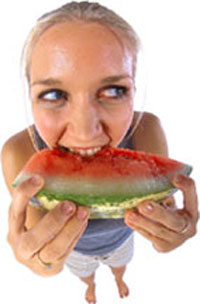Surroundings play key role by eating decisions, study says
It explains why, for example, people who used to be satisfied by a 12-ounce can of soda may now feel that a 20-ounce bottle is just right.
In the June issue of the journal Psychological Science, researches dig into why people are so swayed by this unit idea when they decidehow much to eat.
Geier, a Ph.D. candidate who works with people who are overweight or who have eating disorders, figures people learn how big an appropriate food unit is from their cultures. For example, yogurt containers in French supermarkets are a bit more than half the size of their American counterparts. Yet French shoppers don't make up the difference by eating more containers of the stuff, he noted.
He and the other researchers tried a series of experiments using environmental cues to manipulate people's ideas of how big a food unit is.
In one, they put a large bowl with a pound of M&Ms in the lobby of an upscale apartment building with a sign: "Eat Your Fill ... please use the spoon to serve yourself." The candy was left out through the day for 10 days, sometimes with a spoon that held a quarter-cup, and other times with a tablespoon.
Sure enough, people consistently took more M&Ms on days when the bigger scoop was provided, about two-thirds more on average than when the teaspoon was present.
In another experiment, a snacking area in an apartment building contained a bowl with either 80 small Tootsie Rolls or 20 big ones, four times as large. Over 10 working days, the bowl was filled with the same overall weight of candy each day. But people consistently removed more, by weight, when it was offered in the larger packages.
In those experiments, as well as a similar one with pretzels, "unit bias" wasn't the only thing that produced the differences in consumption levels, but it had an influence, Geier and colleagues concluded.
Brian Wansink, director of Cornell University's Food and Brand Lab and author of the forthcoming book "Mindless Eating: Why We Eat More Than We Think," called the new paper an impressive demonstration of the effect in a real-world setting. He has done similar work but didn't participate in Geier's research.
So can all this help dieters?
Some food companies are introducing products in 100-calorie packages, and Geier thinks that could help hold down a person's consumption. He also suspects companies could help by displaying the number of servings per container more prominently on their packaging, the AP reports.
As for what dieters can do on their own, Geier said one of his overweight patients offered a suggestion for restaurant visits: Request that the meal be split in two in the kitchen, with half on the plate and the other half packaged to take home.

Subscribe to Pravda.Ru Telegram channel, Facebook, RSS!





